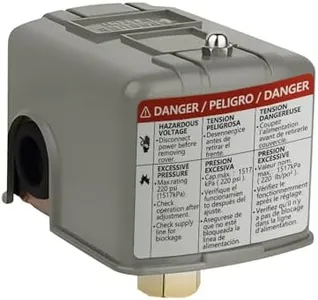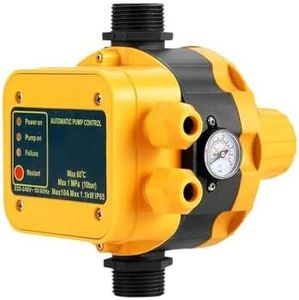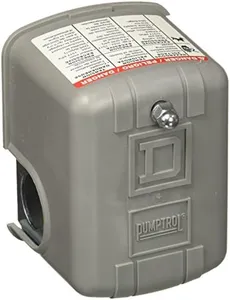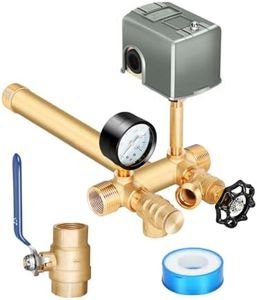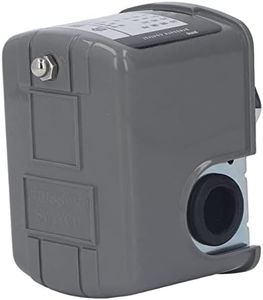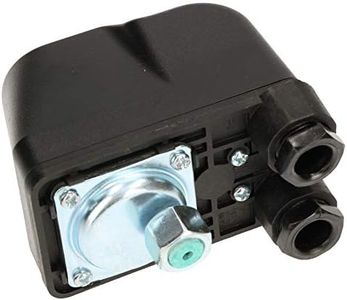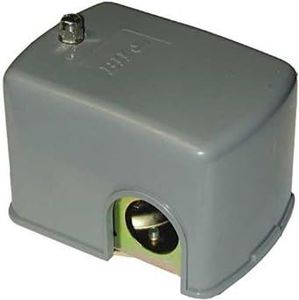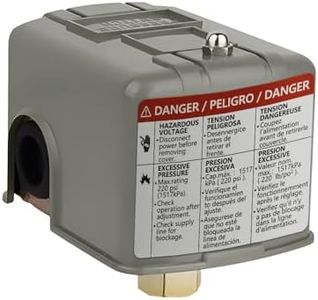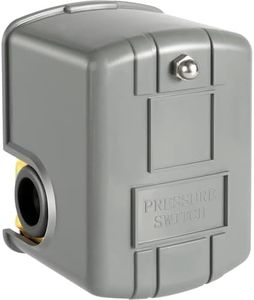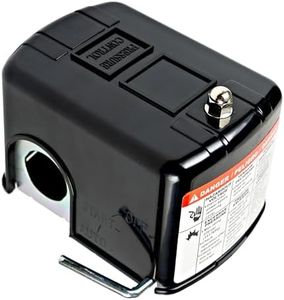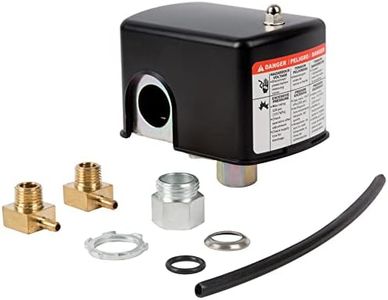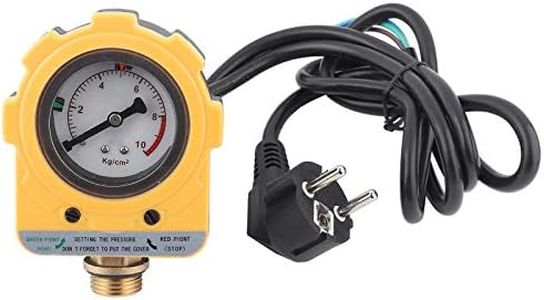We Use CookiesWe use cookies to enhance the security, performance,
functionality and for analytical and promotional activities. By continuing to browse this site you
are agreeing to our privacy policy
10 Best Well Pump Pressure Switch
From leading brands and best sellers available on the web.Buying Guide for the Best Well Pump Pressure Switch
Choosing a well pump pressure switch might feel a bit technical at first, but it's really about making sure your home's water system operates smoothly and meets your family's needs. The pressure switch is responsible for turning your well pump on and off based on specific pressure levels in your water system. Picking the right one is important for reliable water flow, pump longevity, and general home convenience. Understanding a few key specifications will help you select the perfect match for how you use water in your home.Pressure Setting (Cut-in and Cut-out Pressure)Pressure settings on a well pump pressure switch refer to the points at which the switch turns the pump on and off. The cut-in pressure is when the pump starts, and the cut-out pressure is when the pump stops. Common settings are 30-50 psi, 40-60 psi, or 50-70 psi. Lower settings may work for small homes with modest water needs or older plumbing, while higher settings can provide stronger water flow for larger families or homes with multiple bathrooms. Consider your water usage and plumbing limits—some older pipes can't handle high pressure, while newer systems might benefit from higher settings.
Pump Compatibility (Voltage and Horsepower Ratings)Pump compatibility refers to ensuring that the pressure switch matches the voltage and horsepower rating of your well pump. These ratings help the switch handle the electrical load safely and efficiently. Make sure you know your pump's specs, which are usually found on its label or manual, and pick a pressure switch designed to work with those values. If you’re unsure, consulting your pump’s information will steer you in the right direction and prevent electrical issues.
Adjustment CapabilityAdjustment capability is about whether the pressure switch lets you easily change the cut-in and cut-out pressures. Some switches are factory-set, while others have screws that allow you to fine-tune the pressure to better match your household’s needs or personal preferences for water flow. If you want flexibility to make adjustments later—for example, if your family grows or your needs change—choosing an adjustable switch can be a good idea.
Pressure RangeThe pressure range means the span of pressures over which the switch can operate safely. For example, a switch might work from 20 to 80 psi. If your water system requires low or high pressures outside of standard ranges, make sure the switch accommodates that. Generally, most households do well within standard ranges, but unique plumbing or irrigation setups may call for a broader or narrower range.
Enclosure Type (Weatherproofing)The enclosure type refers to how well the pressure switch is protected against dust, moisture, and outdoor conditions. For installations in damp or exposed locations, a weatherproof or sealed enclosure will help the switch last longer and work reliably. If your switch is going indoors in a protected space, this is less critical, but for outdoor or basement placements, choosing a robust enclosure is wise.
